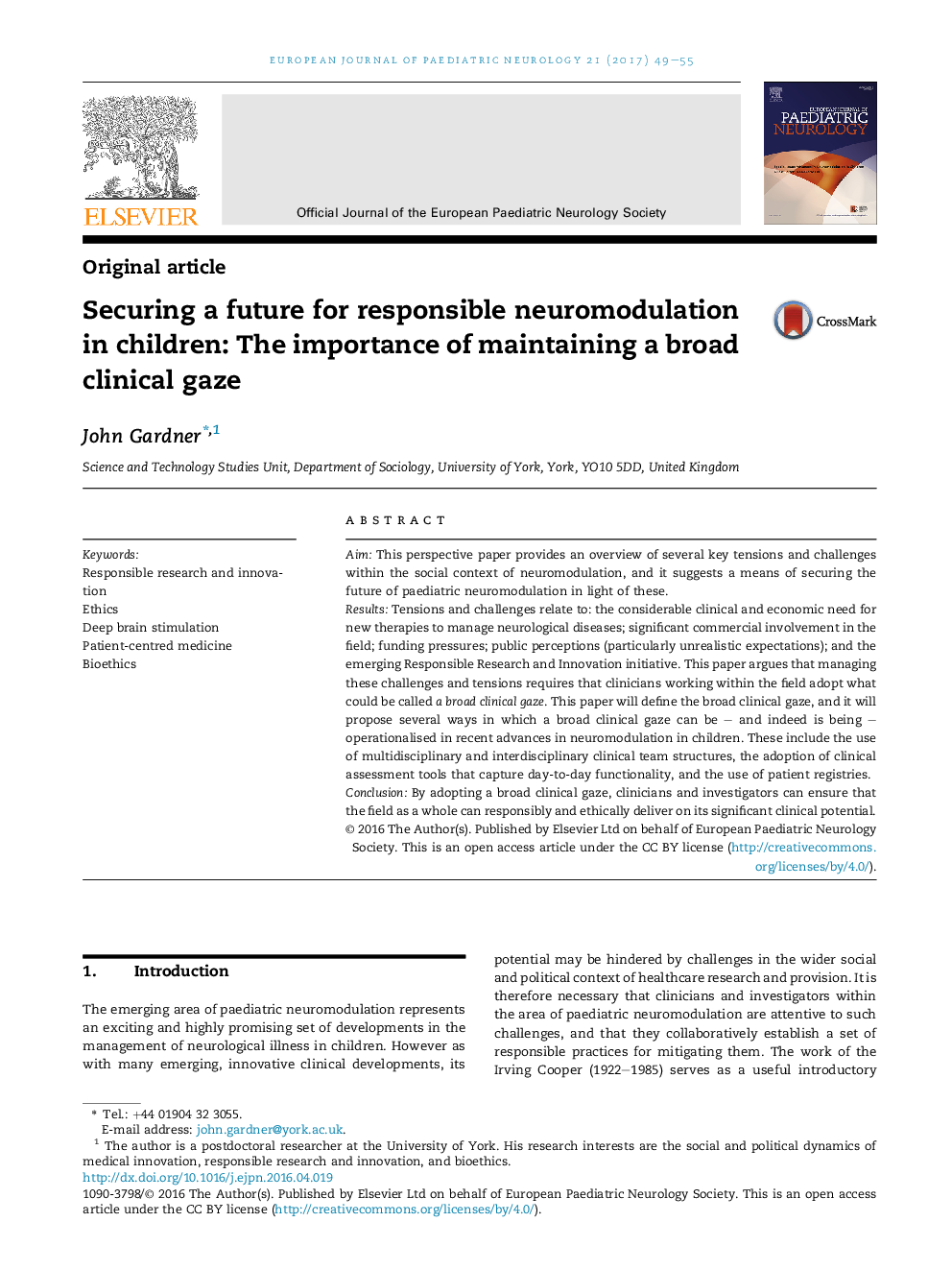| Article ID | Journal | Published Year | Pages | File Type |
|---|---|---|---|---|
| 5628917 | European Journal of Paediatric Neurology | 2017 | 7 Pages |
AimThis perspective paper provides an overview of several key tensions and challenges within the social context of neuromodulation, and it suggests a means of securing the future of paediatric neuromodulation in light of these.ResultsTensions and challenges relate to: the considerable clinical and economic need for new therapies to manage neurological diseases; significant commercial involvement in the field; funding pressures; public perceptions (particularly unrealistic expectations); and the emerging Responsible Research and Innovation initiative. This paper argues that managing these challenges and tensions requires that clinicians working within the field adopt what could be called a broad clinical gaze. This paper will define the broad clinical gaze, and it will propose several ways in which a broad clinical gaze can be - and indeed is being - operationalised in recent advances in neuromodulation in children. These include the use of multidisciplinary and interdisciplinary clinical team structures, the adoption of clinical assessment tools that capture day-to-day functionality, and the use of patient registries.ConclusionBy adopting a broad clinical gaze, clinicians and investigators can ensure that the field as a whole can responsibly and ethically deliver on its significant clinical potential.
